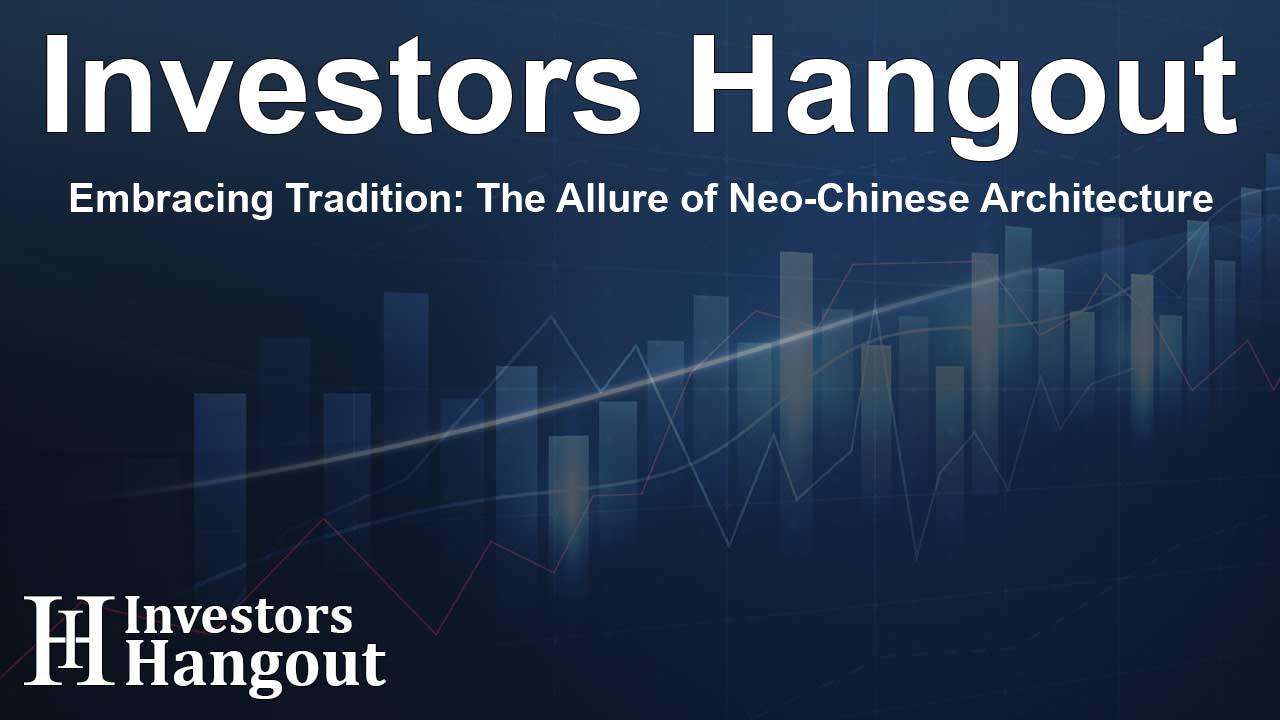Embracing Tradition: The Allure of Neo-Chinese Architecture

Neo-Chinese Architecture: A Unique Blend of Tradition and Modernity
The essence of beauty has captivated humanity since ancient times. Various cultures have developed distinct aesthetics over the centuries, and Chinese aesthetics stand out as a unique facet. Today, a contemporary evolution termed neo-Chinese aesthetics is emerging, merging traditional values with modern sensibilities to resonate with a worldwide audience.
This article invites readers to engage with the principles of neo-Chinese architecture, which weave distinct aesthetics into the fabric of modern life. From serene village scenes to urban plazas, the impact of this architectural style is notable, drawing inspiration from historical beauty while innovating for a modern environment.
The Vision of Wang Shu
In the charming village of Wencun, once facing decline, a transformation has occurred under the visionary architect Wang Shu, recognized as the first Chinese national to earn the prestigious Pritzker Architecture Prize. His designs echo neo-Chinese style, harmonizing traditional architecture with contemporary elements. Thanks to his renovations, Wencun has reinvigorated itself as a destination for tourists, reflecting a blend of cultural depth and modern livability.
Wang’s philosophy emphasizes architecture as an interplay between structures and their surroundings. He describes each building as a kind of camera, capturing the changing landscape outside. This integration of nature and architecture speaks to a larger narrative of how buildings influence memory and experience.
Community and Landscape
Imagine residents gathering on porches of beautifully renovated houses, where colors and materials create a peaceful backdrop conducive to celebration of community. The soft earthy tones of walls embrace vibrant artworks, reflecting tranquility one might find in times long past.
Aesthetic Philosophies in Urban Design
Moving from the rural landscape to urban settings, Chaoyang Park Plaza showcases the talents of architect Ma Yansong. His design evokes traditional Chinese ink wash paintings, merging bold modernity with cultural depth. The plaza serves as a canvas, richly interweaving the aesthetic philosophy of landscape with urban architecture.
Ma remarks on landscape aesthetics transcending mere visual representation, embedding cultural philosophy into art forms such as music and urban planning. This holistic exploration emphasizes that architecture can embody deeper cultural values, enriching its surroundings.
Bridging Tradition and Modernity
Another showcase of this movement is the National Archives of Publications and Culture in Hangzhou, also designed by Wang Shu. By incorporating elements reminiscent of Song Dynasty architecture and traditional landscapes, he successfully honors history while laying the groundwork for future explorations in Chinese design.
Nature as a Central Element
Wang Shu’s approach places utmost value on the relationship between architecture and the natural world. He believes buildings should harmonize with the environment rather than dominate it. His notable work, the Xiangshan Campus of the China Academy of Art, exemplifies this dedication to nature.
In contrast, Ma’s approach promotes a dialogue with nature, believing architecture should incorporate an awareness of environmental context. His projects often challenge conventional aesthetics, encouraging curiosity and creativity in urban spaces.
Personal Spaces and Cultural Connections
Individuals, too, are embracing neo-Chinese aesthetics in their residences. Anastasia Tang, a young architect, has redesigned her home in Hangzhou to reflect a modern interpretation of a Jiangnan Suzhou-style villa. With a thoughtfully designed garden and open spaces, she merges classical elements with contemporary living.
Tang notes that her work is rooted not just in aesthetics but also in the cultivation of cultural values and ideals. Her home serves as a sanctuary, fostering reflection and creativity amid urban chaos.
Human Experience in Design
This focus on human experience is crucial. John Lin, an associate professor, has renovated traditional Hakka tulou dwellings to enhance community engagement, transforming functional spaces into vibrant cultural hubs.
As he reimagined these traditional homes, he emphasized the significance of creating environments that nurture social interaction while respecting historical cultural legacies.
Conclusion: A Path Forward
As China progresses through modernization, the neo-Chinese architectural style emerges as a powerful conduit for maintaining traditional values while embracing innovation. With a spotlight on community, nature, and the human experience, this architectural movement illustrates that the beauty of design can resonate deeply across cultures and generations.
Frequently Asked Questions
What is neo-Chinese architecture?
Neo-Chinese architecture is a contemporary design style that blends traditional Chinese aesthetics with modern architectural practices, focusing on harmony with nature.
Who is Wang Shu?
Wang Shu is a renowned Chinese architect known for his innovative neo-Chinese designs and the first Chinese recipient of the Pritzker Architecture Prize.
How does neo-Chinese architecture reflect cultural values?
This architectural style emphasizes a connection to nature, community, and historical traditions, enriching modern spaces with cultural significance.
What influences neo-Chinese architecture today?
Current influences include a focus on sustainability, the integration of natural landscapes, and the fusion of traditional craftsmanship with modern techniques.
Where can I see examples of neo-Chinese architecture?
Notable examples can be found in renovated villages, urban plazas like Chaoyang Park Plaza, and contemporary homes across China.
About The Author
Contact Dylan Bailey privately here. Or send an email with ATTN: Dylan Bailey as the subject to contact@investorshangout.com.
About Investors Hangout
Investors Hangout is a leading online stock forum for financial discussion and learning, offering a wide range of free tools and resources. It draws in traders of all levels, who exchange market knowledge, investigate trading tactics, and keep an eye on industry developments in real time. Featuring financial articles, stock message boards, quotes, charts, company profiles, and live news updates. Through cooperative learning and a wealth of informational resources, it helps users from novices creating their first portfolios to experts honing their techniques. Join Investors Hangout today: https://investorshangout.com/
The content of this article is based on factual, publicly available information and does not represent legal, financial, or investment advice. Investors Hangout does not offer financial advice, and the author is not a licensed financial advisor. Consult a qualified advisor before making any financial or investment decisions based on this article. This article should not be considered advice to purchase, sell, or hold any securities or other investments. If any of the material provided here is inaccurate, please contact us for corrections.
